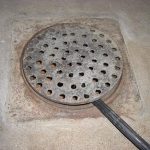Accountability is always necessary no matter why you’ve chosen to embark on the planting path. You must attentively study this article if you are serious about expanding your gardening knowledge or currently considering adding a plant to your collection.
Learn more about the Cotyledon Tomentosa ‘Bear’s Paw’, please continue reading to learn more about Cotyledon Tomentosa and further advice on how to take good care of this plant.
One of the cutest members of the succulent family is Cotyledon Tomentosa, sometimes referred to as Bear’s Paw. This little guy does a great job of creating lovely contrast and unusual texture in any environment. It has distinctive thick, oblong velvety green leaves with noticeable dark red serrated edges that resemble a bear’s claws and velvety coating.
Bear’s paw grows in a low, shrub-like environment and can grow to a height of over 30 cm. In the spring, it often produces big orange bell-shaped blooms.
Caring for Bear’s Paw
Sunlight
Cotyledon Tomentosa ‘Bear’s Paw’ should have access to at least six hours of direct sunlight daily, while it can also take partial shade. Make sure it is positioned indoors in a well-lit area with adequate sunshine.
Soil
Like all succulents, Cotyledon Tomentosa ‘Bear’s Paw’ requires a releasing soil mix for its needs to prevent root rot. Use prepared soil or mix coarse sand and perlite into regular potting soil. Succulents, like Cotyledon Tomentosa, thrive in somewhat acidic soil (pH 6), unlike other plants.
Water
If the top inch or two of the soil is already dry, you can water your plant. Given that Cotyledon Tomentosa ‘Bear’s Paw’ is a dormant plant during the winter, it is advised to water it just a few times. The quantity of watering required makes sure the plant won’t become shriveled. For your Cotyledon Tomentosa ‘Bear’s Paw’, you might wish to attempt the “soak and drain” watering technique. This method requires you to take your plant to the sink, soak it well, and then let the water drain. During the growing season, it’s also essential to deep water plants frequently, at least once a week.
Temperature and Humidity
Cotyledon Tomentosa ‘Bear’s Paw’ is not a fast-growing plant in the cold. It is preferable to grow it in a planter that can be carried indoors if you are planting it anywhere that experiences temperatures below 30 degrees Fahrenheit. Cotyledon Tomentosa will probably survive in locations without a freeze. To assist the plant in surviving a frost, briefly cover it with light or straw.
Fertilizer
Cotyledon Tomentosa ‘Bear’s Paw’ can be fertilized during its typical growing season and not during winter. During the winter, refrain from feeding your plant. A multi-purpose, water-soluble fertiliser is an option. Regarding fertilization, it doesn’t require much care, especially in an extremely cold climate. However, they must be nourished at least twice per month, typically from April to August, during their active growth phase, which occurs during the spring and summer. Please give them a light, balanced, all-purpose water-soluble succulent fertiliser during this period.

Propagate
There are various methods you can use to spread your Bear’s Paw. Cuttings are the best and most straightforward method of propagation. All you have to do to accomplish this is to make a 15 cm long cut from the main plant, trim some of the leaves, and then wait a few days for the cut to callous over. Then wait for the enchantment to unfold by putting it in a warm location with soil that drains well and a temperature range of 22 to 27 degrees Celsius. When the soil feels dry, water it.
It can also be multiplied by starting from a leaf. In contrast to “cuttings,” this approach is exceedingly challenging. If you decide to try it, you must carefully detach the leaf from the plant and let it calluses for a couple of days before putting it on some soil that drains properly.
Pests And Diseases
Pests Diseases
Like the majority Crassulaceae family, their leaves are very attractive to pests, especially cochineal. Due to the silver hair on its leaves, these pests are readily missed, making routine inspections crucial.
Plant Diseases
Scale, mealybugs, and spider mites are mostly responsible for Bear’s Paw infection. Mealybugs typically appear as sticky white insects near the base of leaves and stems. Apply a cotton swab soaked in rubbing alcohol straight to the pests to eradicate them as soon as possible. Alcohol kills pests by dissolving their protective coating.
It a cute and simple to maintain; if you decide to plant it, keep in mind that it needs lots of light. It’s a fantastic succulent variety for new gardeners. Although Cotyledon tomentosa ‘Bear’s Paw’ is typically thought to be non-toxic, there have been some reports that it may occasionally be somewhat harmful. They thrive in containers, sunny patios, scorching corners adjacent to pools, and hot, dry locations where they make beautiful rocker plants. It is an intriguing addition to anyone’s collection.



